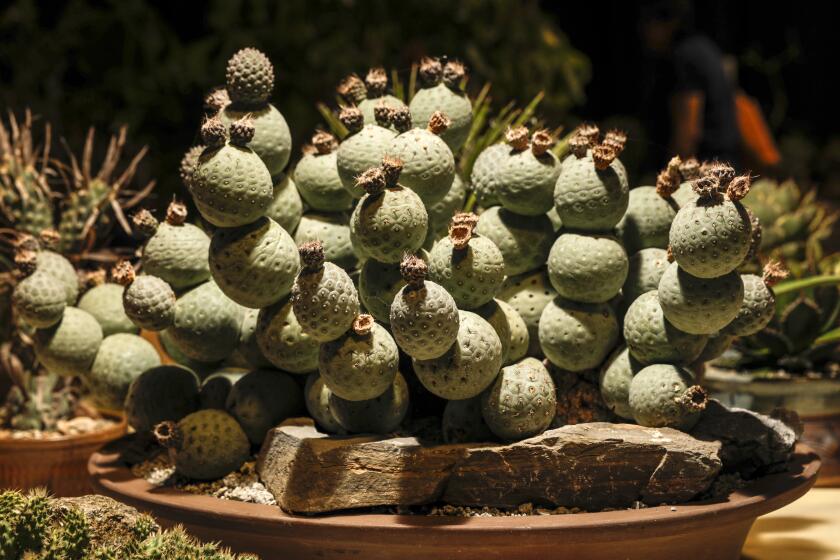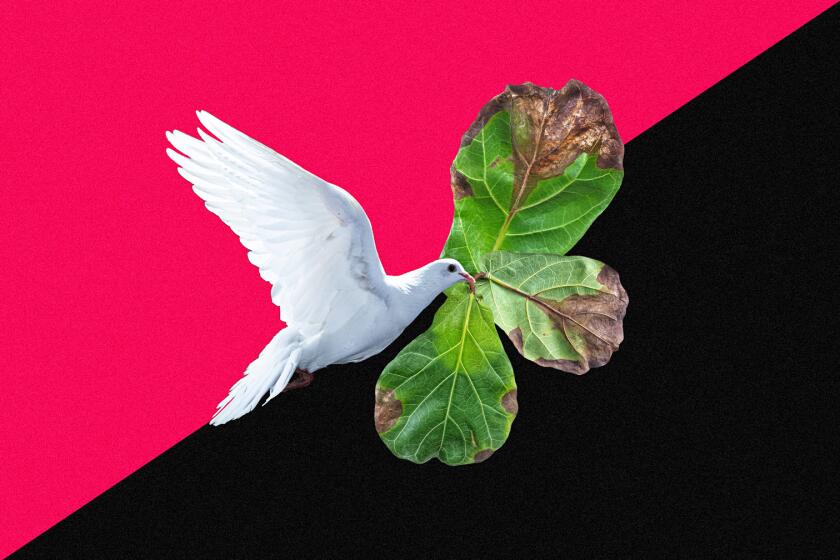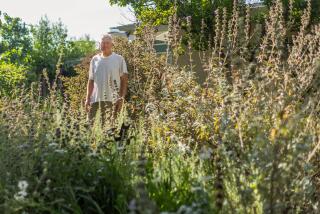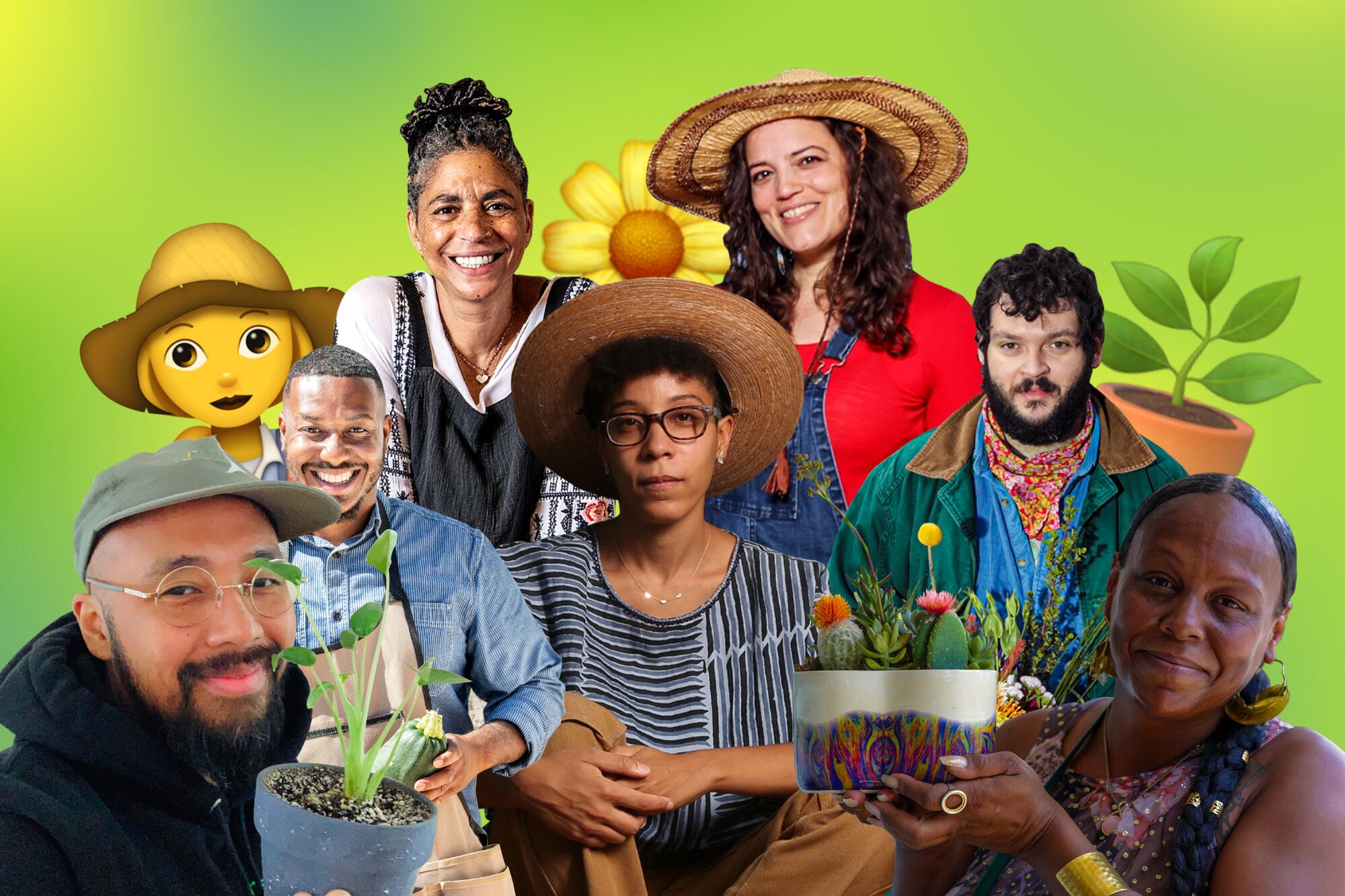
In June 2020, we published the first story for Plant PPL, an L.A. Times Plants series in which we interview plant influencers, business owners, enthusiasts and gardeners of color making the world a brighter, greener place.
The first story, written by Senior Art Director Martina Ibáñez-Baldor, profiled Boyle Heights Instagram influencer and plant pop-up shop owner Andi Xoch, better known to her 42,000-plus followers as @latinxwithplants.
Plant PPL was pitched in response to the growth of the Black Lives Matter movement last summer and the resulting conversations surrounding diversity in the media.
Since then, it has presented the stories of more than 30 plant lovers including Florence Nishida, a Japanese American teacher-turned-master gardener in her 80s from South L.A.; Nemuel DePaula, an immigrant from Brazil who transformed a gray truck from Craigslist into a pink flower shop on wheels; and La Nola Smith, a Leimert Park vendor who made her succulent arrangement stand into a vibrant educational hub for children, community elders and homeless people.
To celebrate Plant PPL’s first year, we asked 20 of the interviewees we’ve featured for their best plant care advice and gardening tips.
So if you’d like to know why it’s important to dust your plant’s leaves, learn what the top three beginner-friendly plants are (as recommended by Instagram’s fabulous PlantKween Christopher Griffin) or discover how talking — and singing — to your plants can help them grow, continue reading below.
These interviews have been edited for length and clarity.
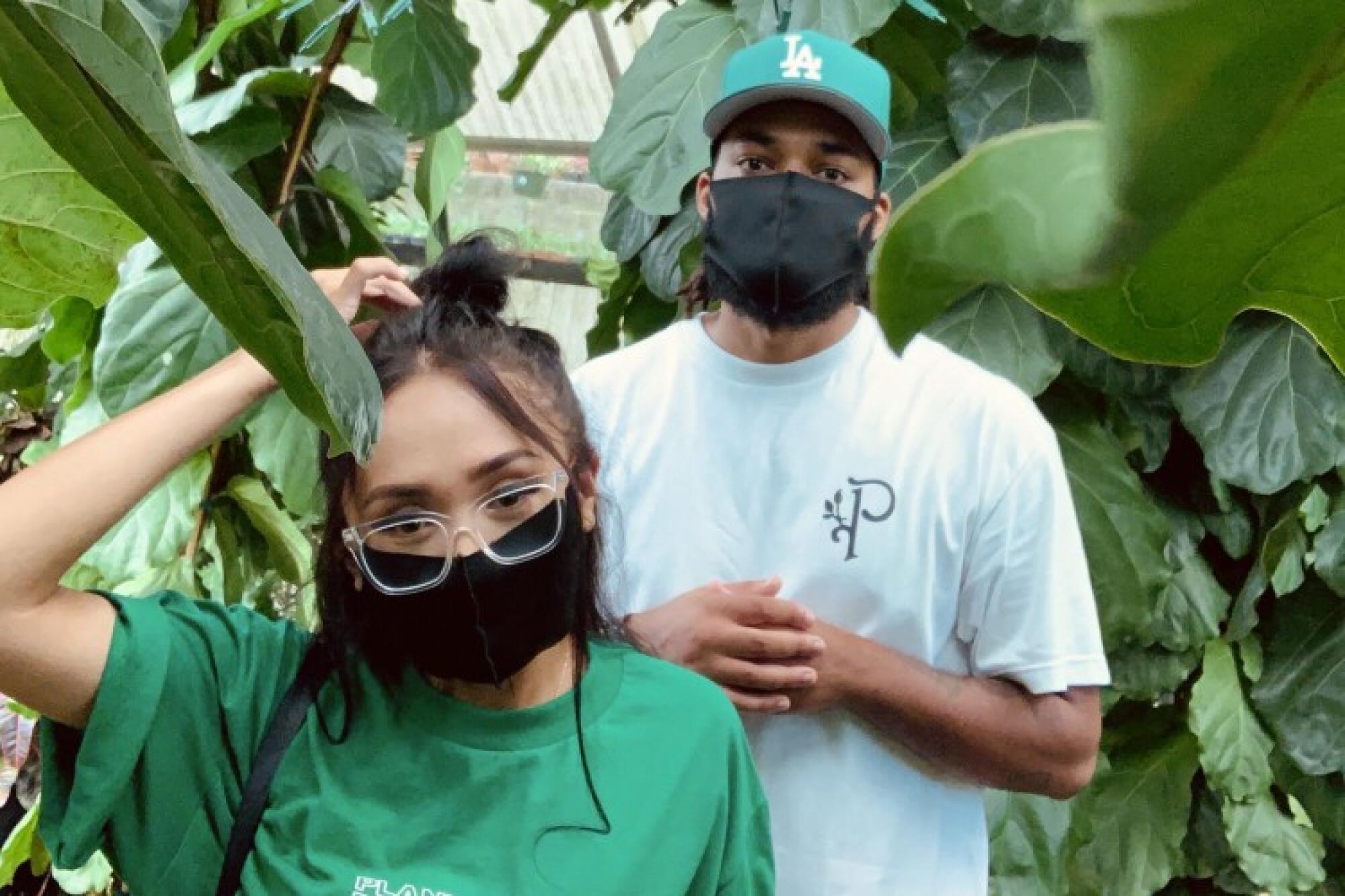
Jon Perdomo, plant care YouTuber, Instagram influencer and business owner
Rotate your plants. If a plant is facing one way for a long time, the plant will naturally grow toward the sun. Rotating it will straighten it out and help to give your plant a fuller look.
Also, something we do to know when we need to water our plants is noting the weight of the pot when it’s freshly watered versus bone dry. Doing so will let you know when your plant is truly thirsty.
Finally, when plant shopping, observe where the plant is at the plant shop. Is it in sun? Shade? Is it really humid where the plant is? How far is it away from the window? All these questions are important because it’ll be an easier transition phase from the shop to your space [if you create a similar environment].
Read more about Perdomo, his fresh plant-themed streetwear and Plant Man P in this August 2020 Plant PPL feature.
Distract yourself from August’s heat by visiting some of these real-time plant events in Southern California in the garden calendar for August 2021.
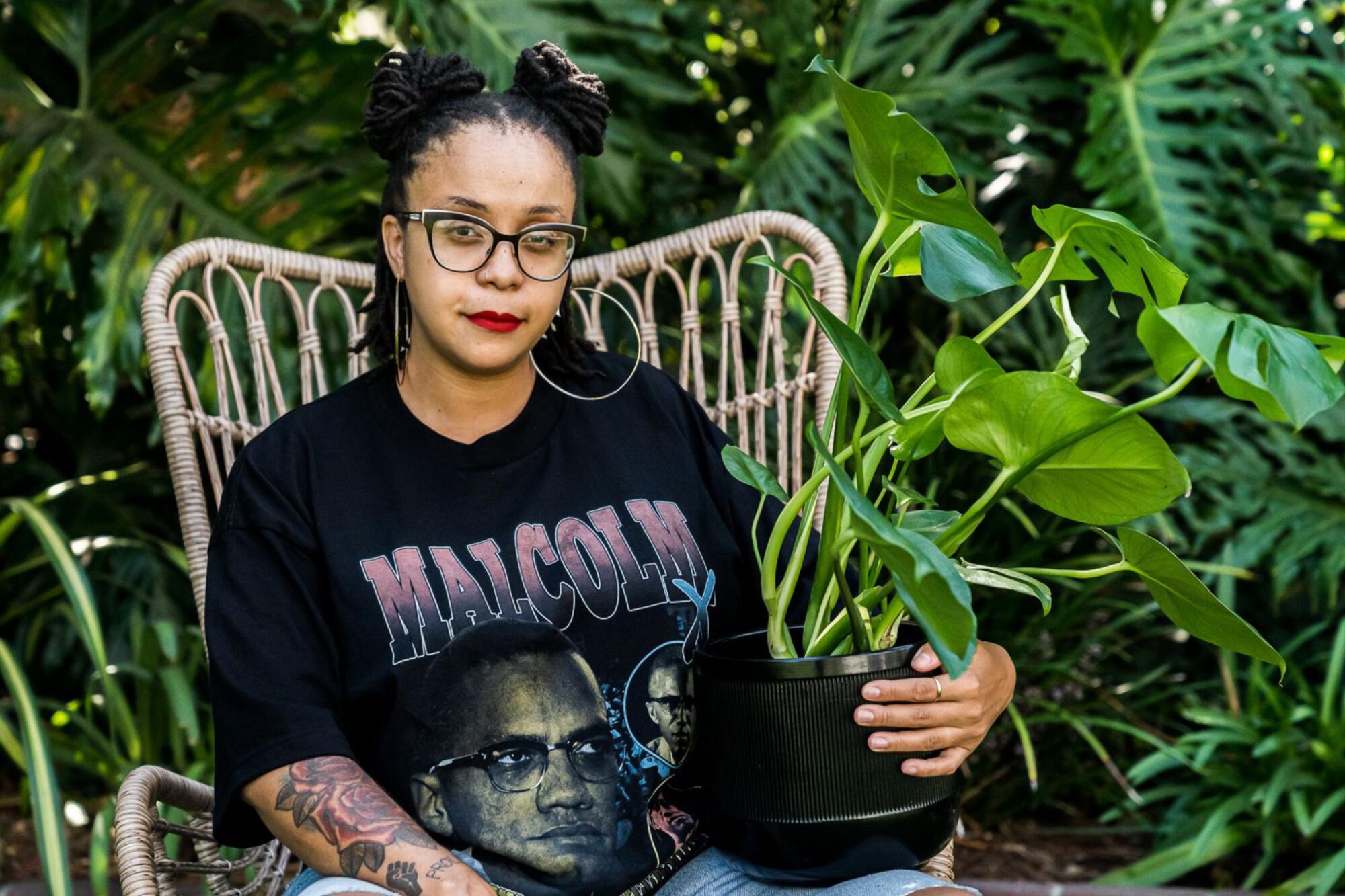
Courtney Warwick, plant parent and influencer @blkgirlgrnthumb
- Less is always best. In terms of watering, underwatering is always better than overwatering. I know we all love our plant kids. Sometimes we pour so much love into them, and it ends up being excessive. That can cause root rot, and no one wants that for their plants.
- Wipe your plants’ leaves. Dust can block the sunlight that our plants need, which is a huge problem. Our plants need to photosynthesize, and blockage on their leaves makes it difficult. You don’t have to do it daily but consider making a habit of checking them biweekly to see if a nice wipe-down is needed.
- Rap to your plants. It may not be the “typical” care tip, but our plants need love and attention, right? This is why talking to them is so important. I guarantee your plants will show how happy they are in their own way (a.k.a. new growth).
Learn more about Warwick (and why she raps to her plants) in this February 2021 Plant PPL feature.

Christopher Griffin, the PlantKween of Instagram
These are my Top 3 plants for beginner plant parents.
- The snake plant (a.k.a. sansevieria) is one of my favorite plants and also happens to be a fantastic plant for new plant parents. This “kween” is extremely resilient, adaptable and easy to care for. The plant thrives in bright, indirect light but can survive in low light conditions as well. You do not have to water this plant often — every two weeks in the warmer months and every three to four weeks during the colder months. Snake plants also absorb excessive amounts of carbon monoxide, emit oxygen and filter other toxins released into the air from common household products.
- The pothos plant is another one of my favorites, and it was actually the very first plant I welcomed into my home. Watering this plant is pretty easy — once a week during warmer months and every two weeks during colder months. The thing I enjoy most about this kween is how quickly she grows if provided with the right amount of care and attention. During summer months, my pothos plant was growing a new leaf weekly!
- The Monstera deliciosa would have to be on this list as well. It is always important for plant parents to allow themselves space to grow in their plant-parent skills, and I think caring for a Monstera deliciosa is one way to do that. This kween is not as easy to care for as the pothos or snake plant, but it is still fairly easy compared to other plants. These kweens need brighter, indirect light, and if you don’t have that sun exposure, I would invest in grow lights. These plants also enjoy high humidity and a spritz of water on their aerial roots. These plants enjoy well-drained soil — once-a-week waterings during warmer months and every two weeks during colder months.
Read more about Griffin, their popular plant-care Instagram account and their journey to amassing 342,000 followers in this June 2020 Plant PPL feature.
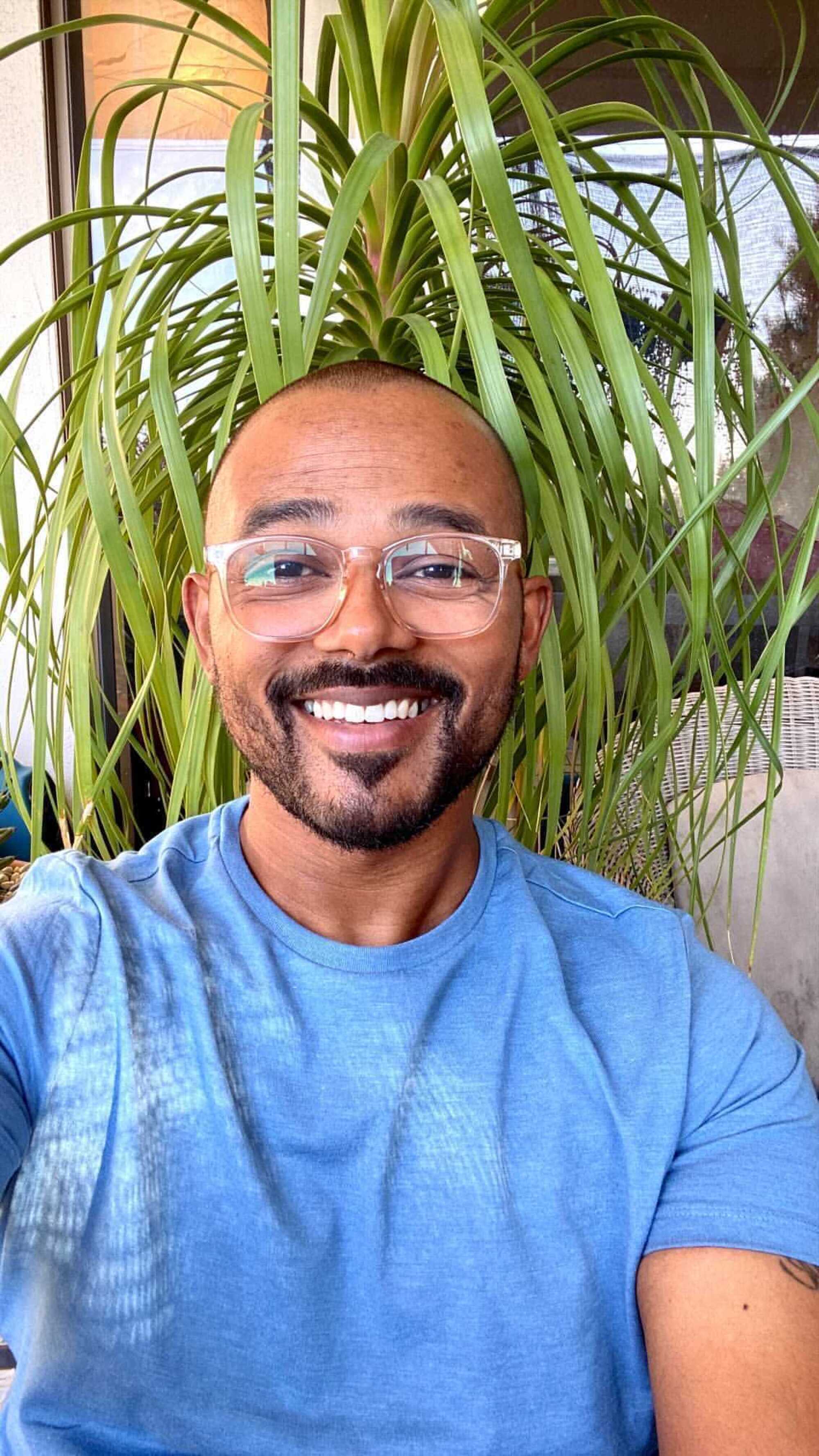
James Monroe, plant-care influencer @unknownsucculents
Basic soil for succulents. Succulents need soil that drains well, and this is a simple mixture to try:
- Cactus and succulent soil — Standard soil with some pumice and lava mixed in.
- Pumice or perlite — Quarried lava rock increases drainage and space for roots to grow.
- Earthworm castings — A “nice-to-have”; worm poop is safe to use and mix into soil.
Soil moisture and pot openings. The amount of space that succulents fill in the opening of a pot will alter the evaporation and affects how long the soil will retain water.
- Filled completely — Not much space for evaporation. Soil is wet longer.
- Some space available — Some space allows for evaporation. Soil stays moderately wet.
- Open space — Allows soil to dry the quickest.
Water retention in different spots. The material of a pot has a lot to do with how it retains water.
- Terra cotta is the best for breathability. The clay is porous, allowing moisture and air to transfer. More forgiving for less-draining soil.
- Glazed and plastic pots do not breathe. Water only releases through bottom holes and the opening at the top. Use high-draining soil to ensure it dries more quickly.
Learn more about James and other awesome Black plantfluencers in this July 2020 L.A. Times Plants article.
Stephanie Horton, plant parent and influencer @botanicalblackgirl
Give yourself grace and the space to experiment, stumble and learn when it comes to houseplants. No one started caring for plants as an expert. Just start small. Do your best to try to mimic your plant’s natural environment if possible.
When introducing a new plant into your space, quarantine it for at least one to two weeks and be attentive. If there are any potential pests hitching a ride on your new plant baby, this is the time to notice and take action.
Connect with other plant people, experiment, propagate and have fun!
Learn more about Horton and other awesome Black plantfluencers in this July 2020 L.A. Times Plants article.
I accidentally brought a plague upon my house. So I turned to the experts, who taught me how to eradicate a fungus gnat infestation.

Janessa Molina Maquindang, co-founder of the FlyPlant Shop
When it comes to giving your plant baby the TLC it needs, pruning and giving it a haircut is very necessary.
In this video, @theflyplantmama is going to show you how to prune the dead parts of a dieffenbachia plant that is no longer providing the life and nutrients that it needs to thrive. Grab your sanitized gardening shears, and let’s start pruning our babies so that they can use their energy to push out new growth.
Learn more about Molina Maquindang and how her plant Instagram account opened the door for her to join her relatives in opening the FlyPlant Shop in this July 2021 Plant PPL feature.
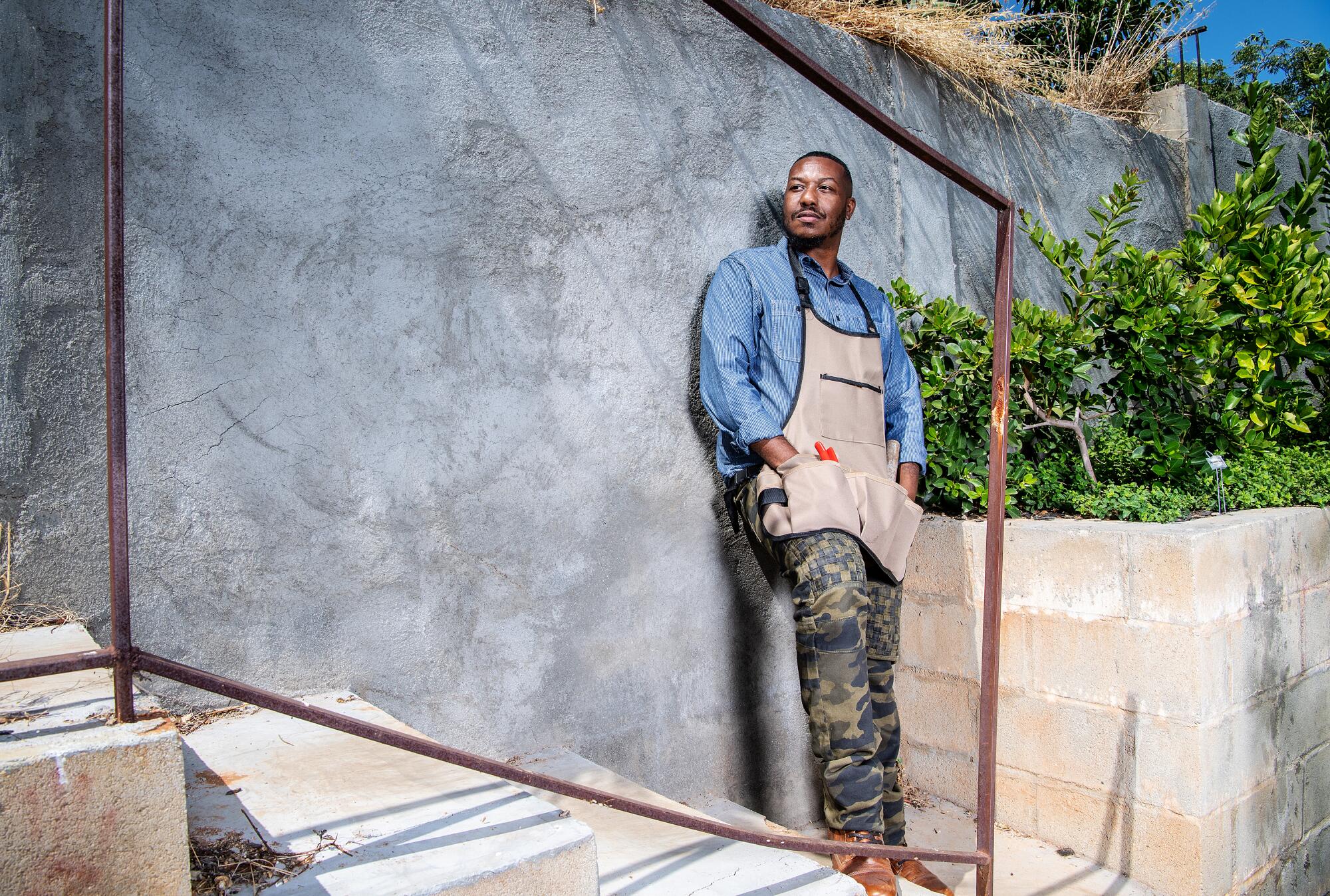
Ken Sparks, patio gardener
When planting fruit trees that typically grow in climates with a distinct winter (think apples, peaches, nectarines, pears, plums, cherries and blueberries) in our warm climate, we have to keep in mind chill hours (hours below 45 degrees). Grow low-chill cultivars of these plants. Some of my favorites are the Anna apple, Golden Dorsett apple, Florida Prince peach and Panamint nectarine.
Additionally, most fruit trees are either self-pollinating or require a second tree for pollination. Self-pollinating trees will produce pollen on their own, and you will get a great harvest. But the yield will increase by having an additional tree. For example, an Anna apple tree is self-pollinating, but if there is another variety nearby like a Dorsett apple, the yield of fruit will increase drastically. If you are only purchasing one tree, make sure it is a self-pollinating variety.
Read about Sparks’ sprawling urban garden in this August 2020 Plant PPL feature.
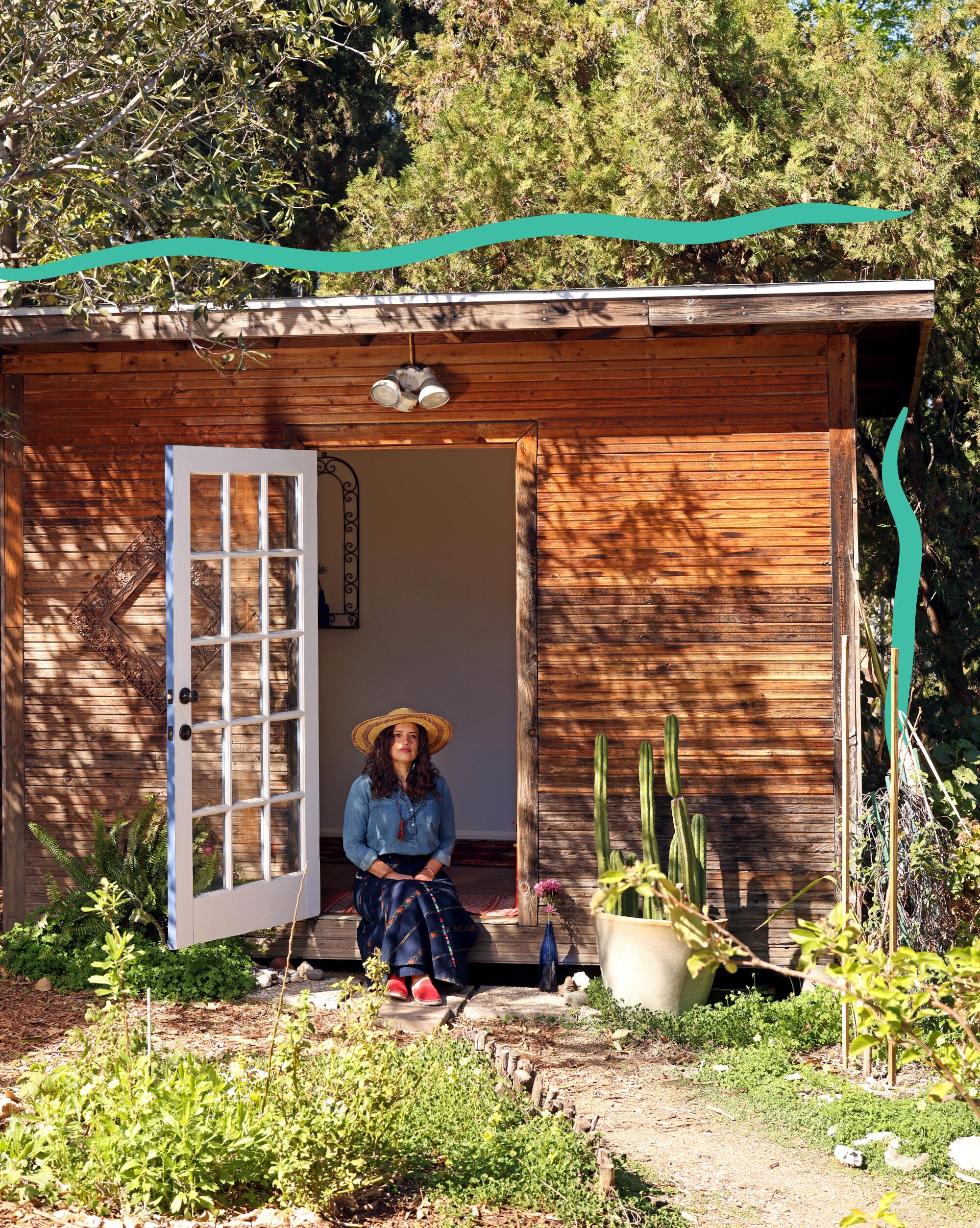
Meadow Carder-Vindel, gardener and owner of Greenstone Farm and Sanctuary
While planning the placement of plants in your garden is important, leave room for intuition and inspiration to organically unfold. It is like the concept of painting by numbers versus freestyling it. One will give you a targeted outcome, and that can be beautiful in itself, while the other allows for creativity and beauty to naturally unfold in a deeply fulfilling way. We do both in our garden.
When planning your garden, make room for yourself and others to sit and experience the garden or walk easily through it (even better if you are able to make it wheelchair-accessible). Think about who will visit there, human and animal. For example, we have a lot of kids that come here, so we have plants with different textures and smells lower to the ground for them to enjoy. Another example: We have small bowls of water with marbles in it for bees to land on and drink; larger bowls and baths for birds up high so they aren’t vulnerable to predators; and more bowls on the ground for animals.
How does this help plants? Well, bees are pollinators, birds eat pests that eat our plants and, if our animal visitors are thirsty, they will uproot our plants and eat the base to get hydration. If we already have water set out for them, they tend to leave our plants alone. Note: To keep the mosquito population down, dump water on nearby plants and refresh the water daily. It only takes a few minutes.
In hotter months, use shade cloth or burlap to give your plants a break from the scalding sun. It decreases water consumption, and plants struggle less, which allows them to be their best selves and give their best offerings. We do this for our younger trees as well.
Mulch! Mulch! Mulch! You wouldn’t leave your own mama naked to bake in the hot sun all day, so why would you do that to Mama Earth? Mulch is like sunscreen for your soil and also helps it retain water. This allows for more healthy soil organic matter to populate, and that leads to healthier and stronger plants.
Feed your plants well, and they will feed you well. Use things like compost tea, seaweed/sea kelp tea or bone meal to increase the vitality of your plants.
Stagger your planting schedule so you can eat through the whole season, each season.
Don’t pick it all! If you leave just a few plants to go through their whole life cycle, you will have the seeds you need for next year. For example, we love chive blossoms but always leave a few in the ground or pot and let them go to seed. We then gather those seeds and store them well for our next chive planting.
Read more about Carder-Vindel and why she opens up her home garden to visitors in this March 2021 Plant PPL feature.
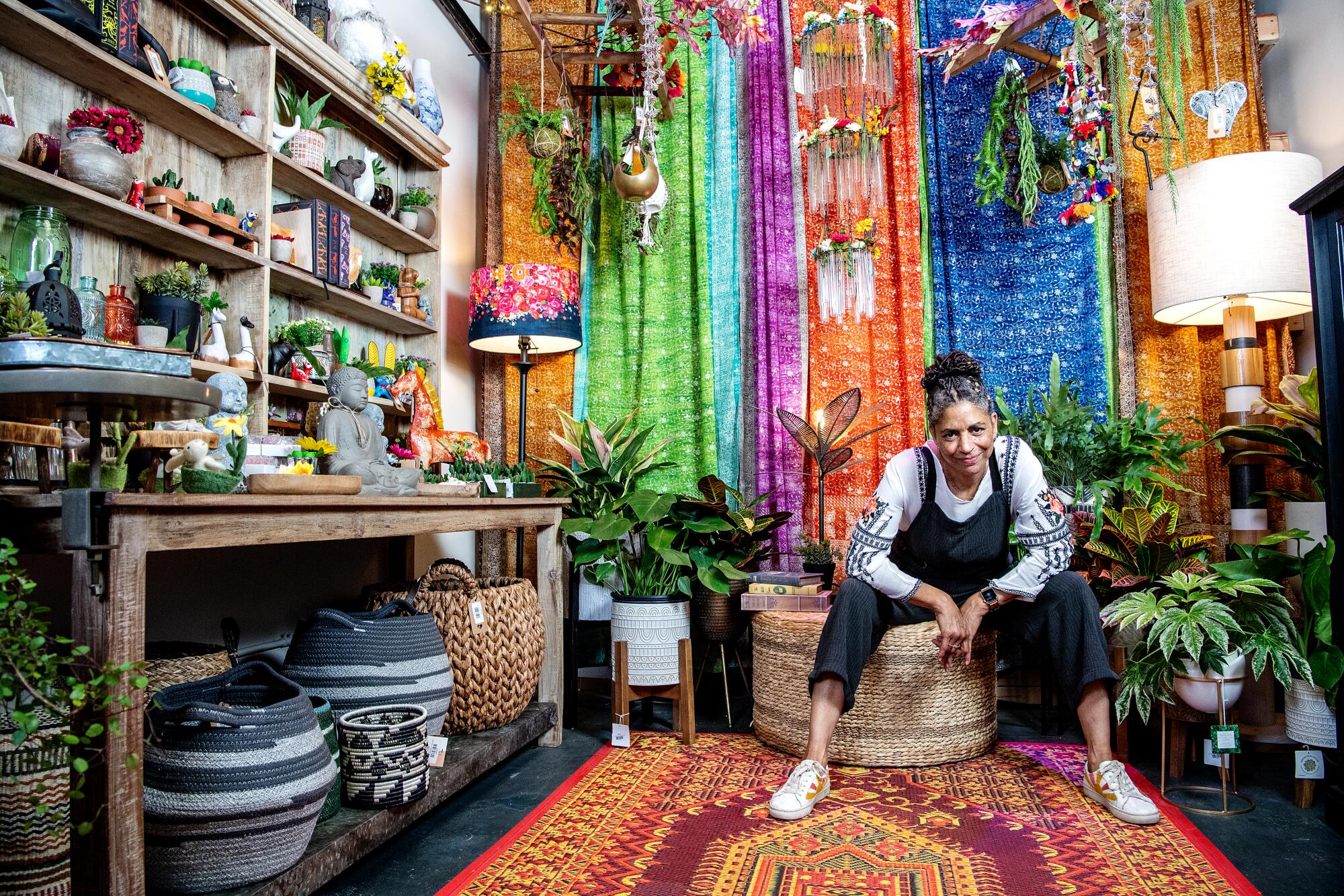
Shawna Christian, co-owner of Tansy
Buy a moisture meter if you have or are planning on accruing a good amount of plants. Moisture meters will tell you where the water level is in the soil and help you not overwater your plants.
Look for signs that your plant has outgrown its pot. Soil levels start to become depleted, and roots begin coming out of the top of the soil looking for other places to root.
Avoid tap water. Crystals in tap water adhere to roots and can ultimately kill the plant.
Learn more about Christian and her plant shop, Tansy, in this March 2021 Plant PPL feature.
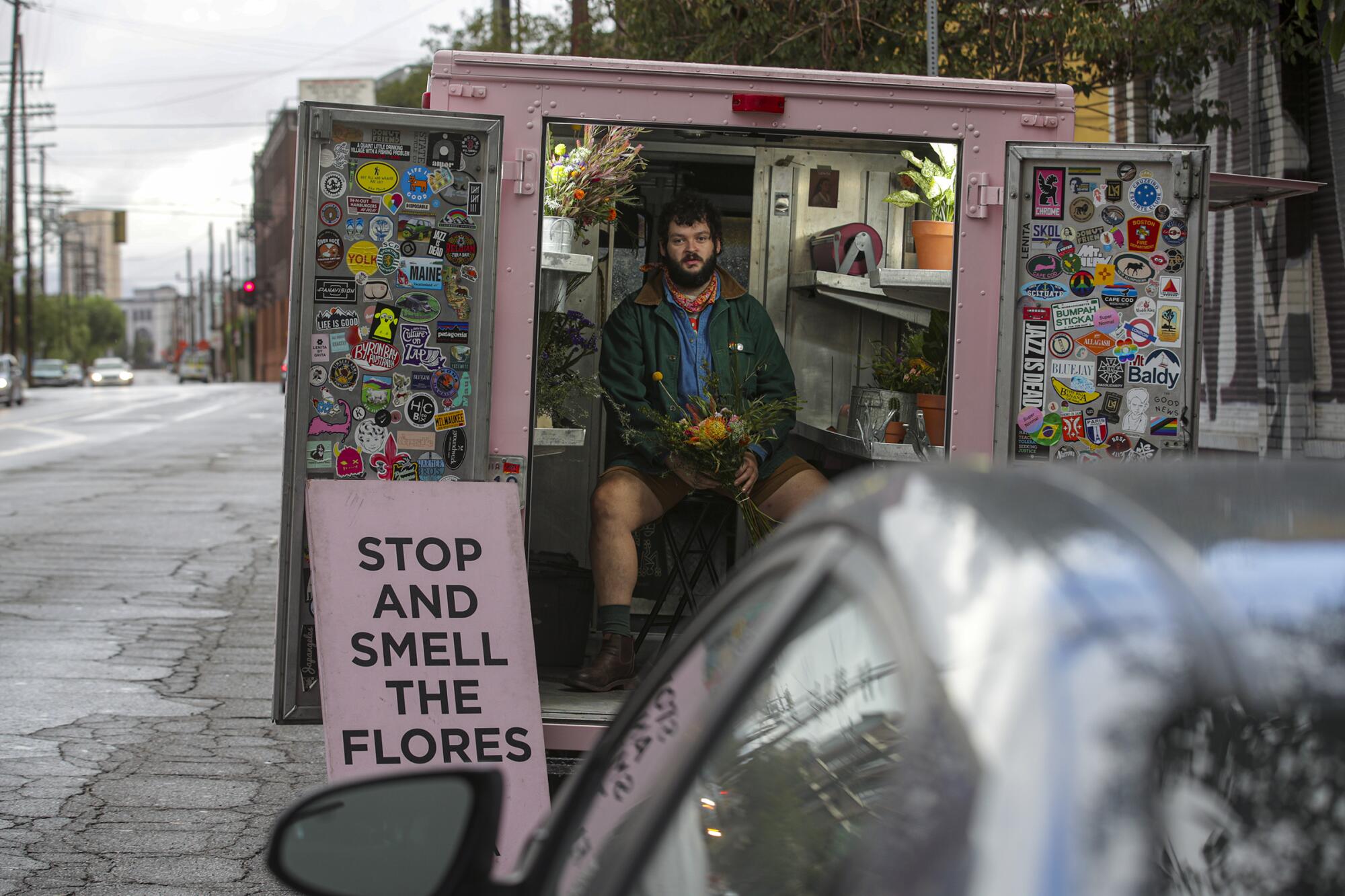
Nemuel DePaula, owner of Lenita by Grita flower truck
Schedule: I’m a huge believer in a strict schedule. I water my plants every Friday and mist them in the evening, three times a week.
Perfect place: I also move my plants around, especially if they’re struggling. Once they begin to thrive, I make that location their home.
Spa day: About once a month, I’ll give my plants a little extra love by cleaning their leaves (with a wet towel or using the showerhead), rotating them or removing any yellow foliage.
Read about DePaula and his Lenita by Grita flower truck (like a food truck for plants!) in this November 2020 Plant PPL feature.
My fiddle-leaf fig was dying a painful death. Until I learned how to process my grief.
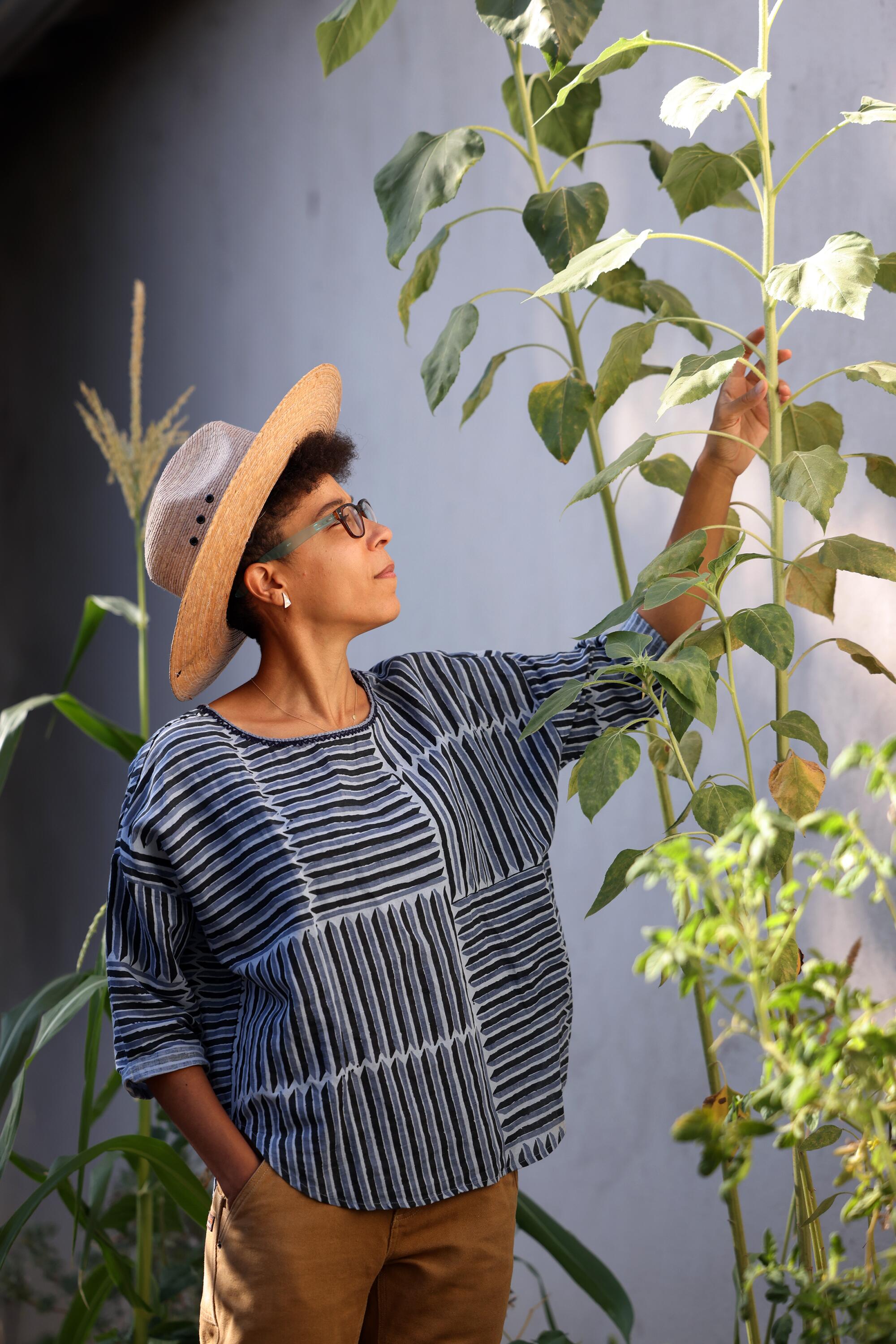
Jamie Renee Williams, urban farmer and designer
How to increase the flavor and nutrients in the food I grow? I’ve found that the plants that are thriving around me are the ones that I have added compost to. Compost is a natural fertilizer that emerges after food scraps have been decomposed or fermented. It is often called “black gold” for its vitality and ability to provide strength and nutrients to plants. If you are growing food, compost affects nutrients and the complexities that lead to deepened flavors. Those flavors and nutrients the plant uses to grow are transferred to us when we eat and help us sustain balance in body, mind and relationships.
What kind of plants can I grow in L.A.? Poinsettias. Don’t throw them away; they do really well in Los Angeles because they are indigenious to Mexico and Central America. The leaves will turn green in the late spring and summer but the red leaves will return. I like to think about plants’ origins and ancestors to get a sense of how they have learned to live. Poinsettias are often something we associate with winter holidays like Christmas, but planting them is a great way to reduce waste and have something beautiful for the next year.
How should I water? I like to use an olla, which is an unglazed ceramic pot that looks like an upside-down lightbulb, to water because the plants and fungi in the soil will work together to pull water through the pores of the ceramic clay to water itself only when it is needed. It’s very good for saving water and reduces the amount of time you spend watering.
Learn more about Williams’ garden in this September 2020 Plant PPL feature.
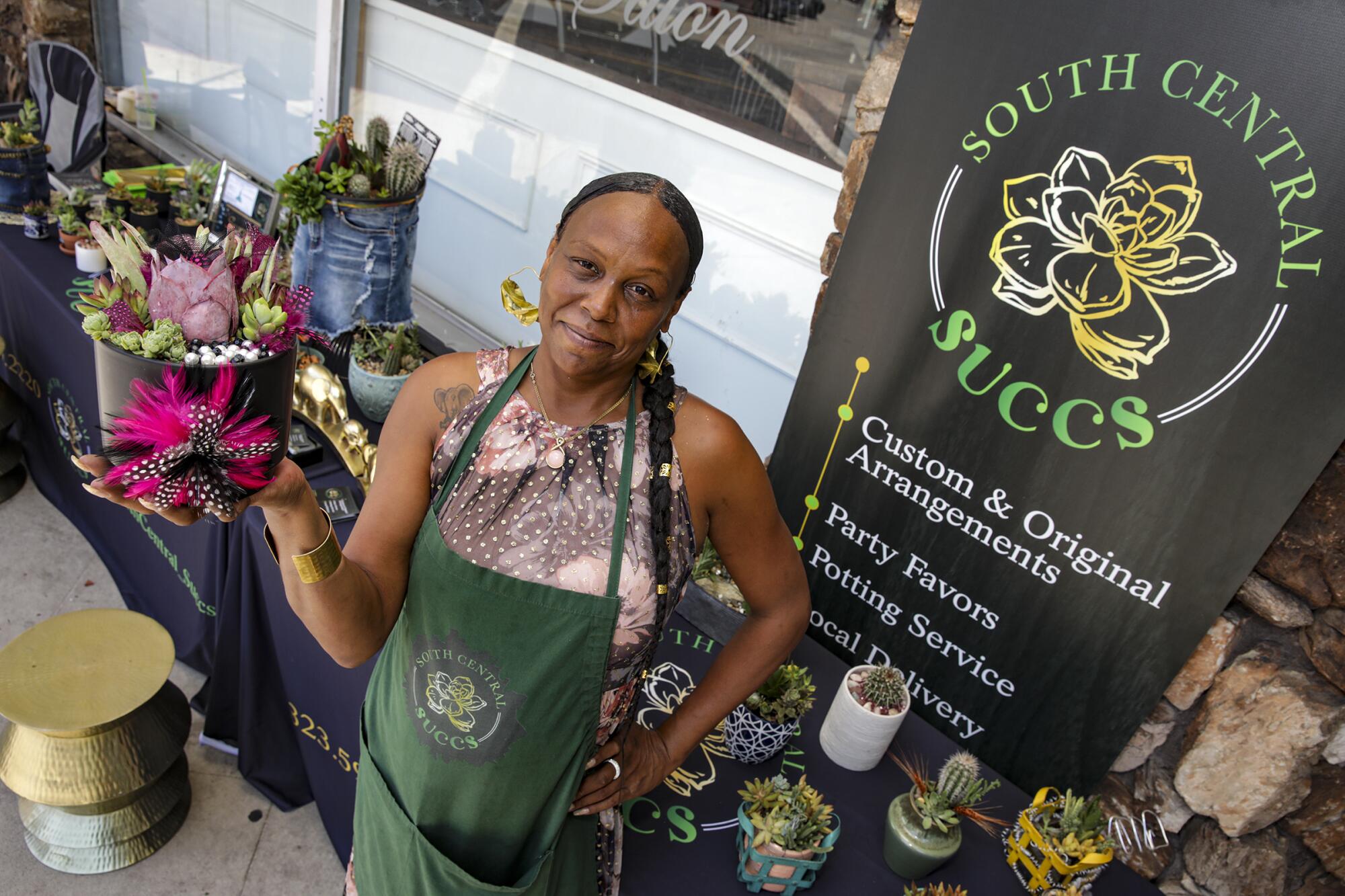
La Nola Smith, owner of South Central Succs
Like I instruct all my customers, “Treat the soil like cornbread. If it’s dry, it’s done.” Never let your soil get done. Always keep it almost done. Use a wooden stick, like a popsicle stick, to determine the moisture. If the stick comes out clean, it’s done. Make sure the stick comes out damp with “cornbread soil.”
Learn how Smith turned a pencil tree cutting given to her by a neighbor into her beloved business and Leimert Park community hub, South Central Succs, in our latest Plant PPL feature.
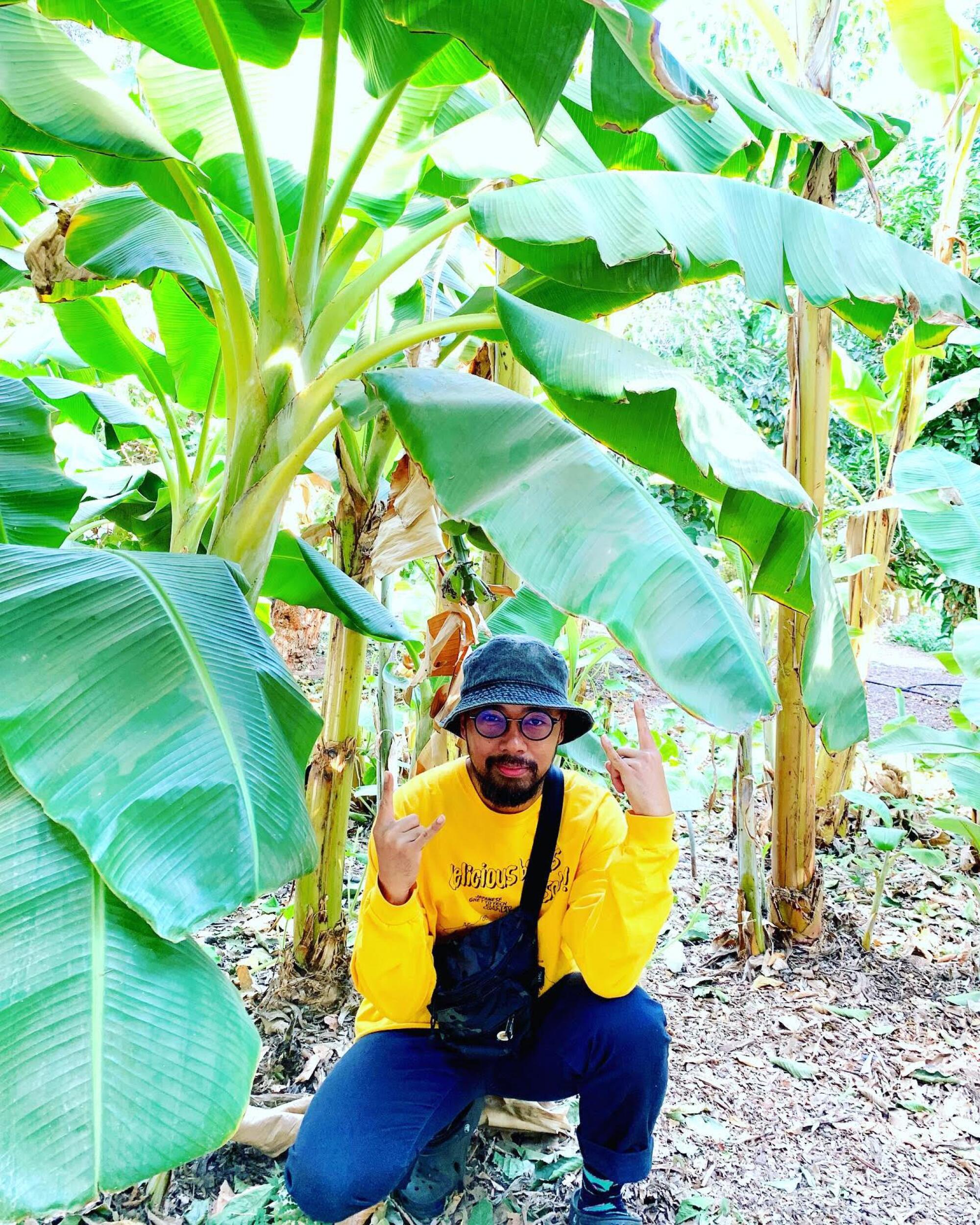
Mark Redito, music producer and plant parent
Get to know the plant’s cycles — the rhythm of care.
If I had to go back, I would probably restrain myself a little bit more. “Let’s get this one plant and then maybe wait like three months, not like three days, before buying another plant and then get to know it.”
I remember when I got into plants I was just like from zero to 100 — dude, like, I think it’s my personality. I can get really obsessive. You have to figure out which types of plants you’d like to invite into your space.
Learn how Redito, an electronic music producer, incorporates gardening into his music in this July 2020 Plant PPL feature.
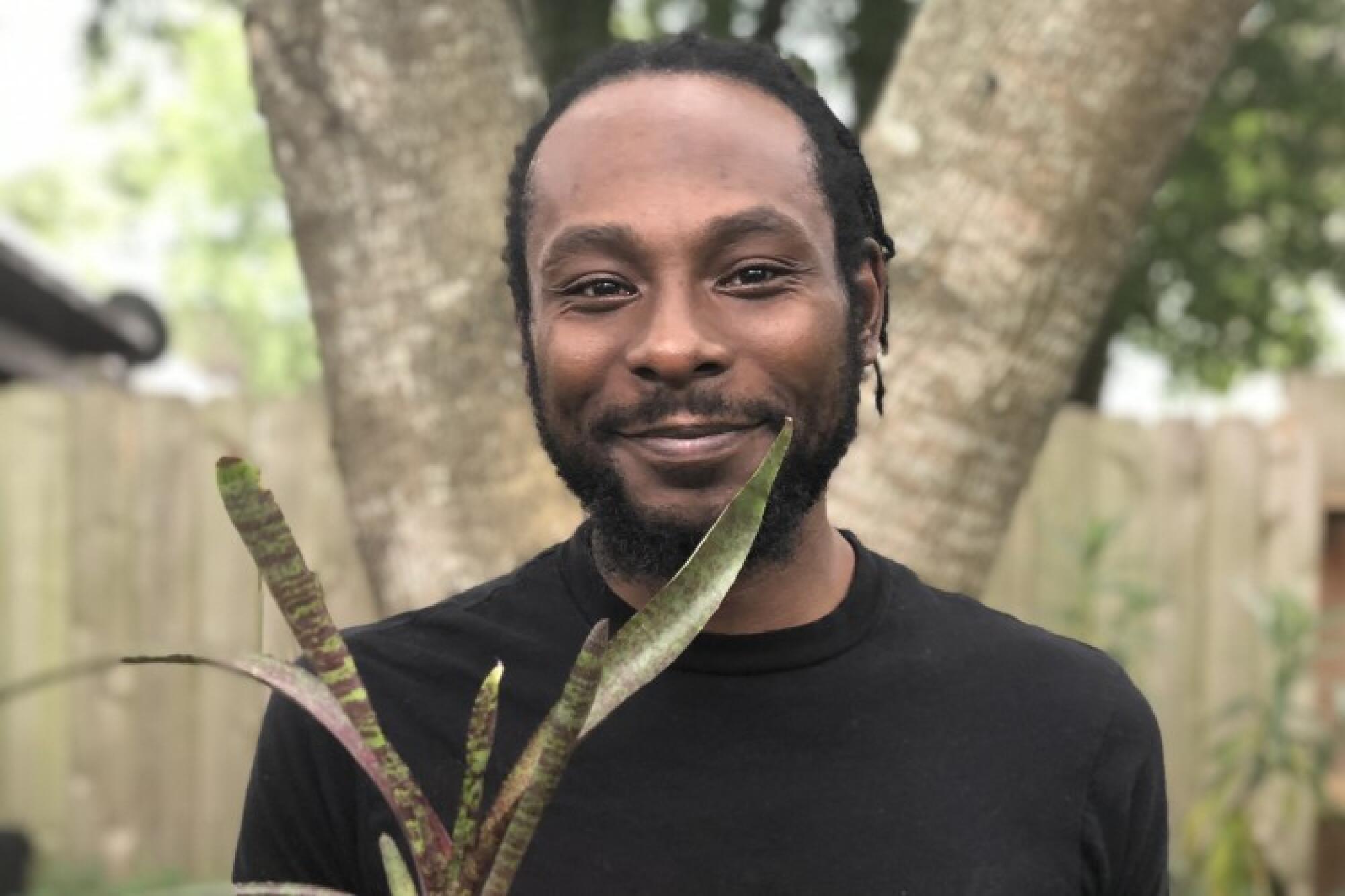
Marcus “Garden Marcus” Bridgewater, TikTok star, business owner and life coach
Do your best to let go of the assumptions you have about how things grow and why. In addition to that, when you look at something on the internet or come across some sort of advice, take that advice and really think about it in relation to your circumstances. One of the things I think happens far too often, especially for beginner plant parents, is that we find ourselves in a predicament that’s difficult: We look for some advice. We apply that advice. It doesn’t work the way we were hoping, and then we get discouraged. So eliminate discouragement by replacing that energy with lessons learned — lessons from all of your experiences — and you will have a better experience.
Read more about Bridgewater, his popular TikTok account @gardenmarcus and his life-coaching organization, Choice Forward, in this June 2020 Plant PPL feature.
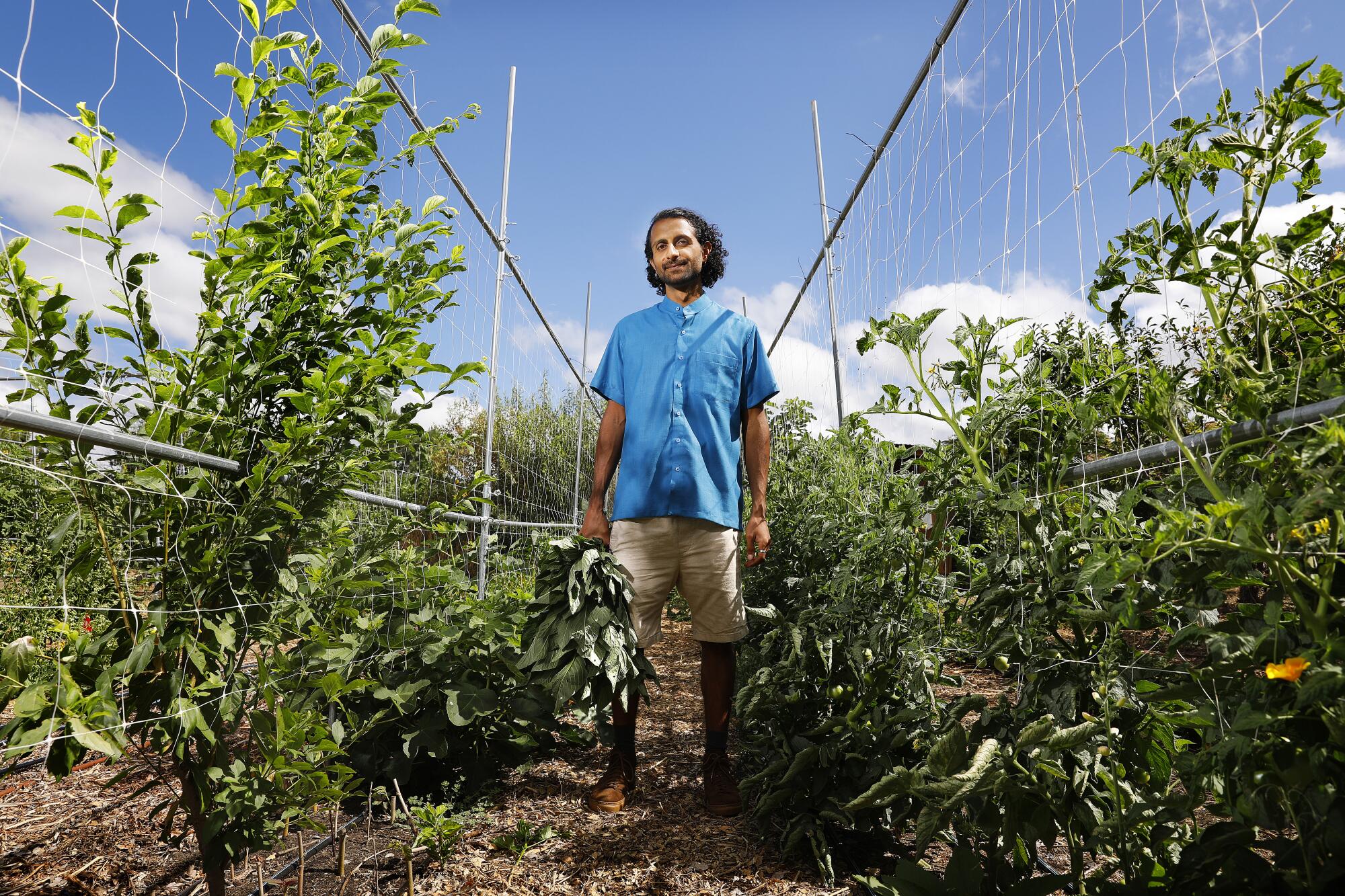
Rishi Kumar, organic gardener and farmer, founder of Sarvodaya Farms and the Healing Gardens.
The best piece of advice that I could give people is to spend time in their garden and listen to what’s happening in the garden. Listen to their plants, listen to the soil and just be responsive to their needs. The garden’s always trying to communicate with you. Some people don’t believe that plants, insects and soil are conscious.
Most gardeners [would agree], after you do this for a while, it would be hard to deny the consciousness of your garden. Listening to your plants means seeing everything that they’re doing as a form of communication: the color of their leaves, the time that they bloom, if they’re wilting, if they’re being eaten by something.
Read more about Rishi and his journey from computer science student to organic farmer in this July 2020 Plant PPL feature. Also check out his popular writings on his personal website and follow him on Instagram @farmerrishi
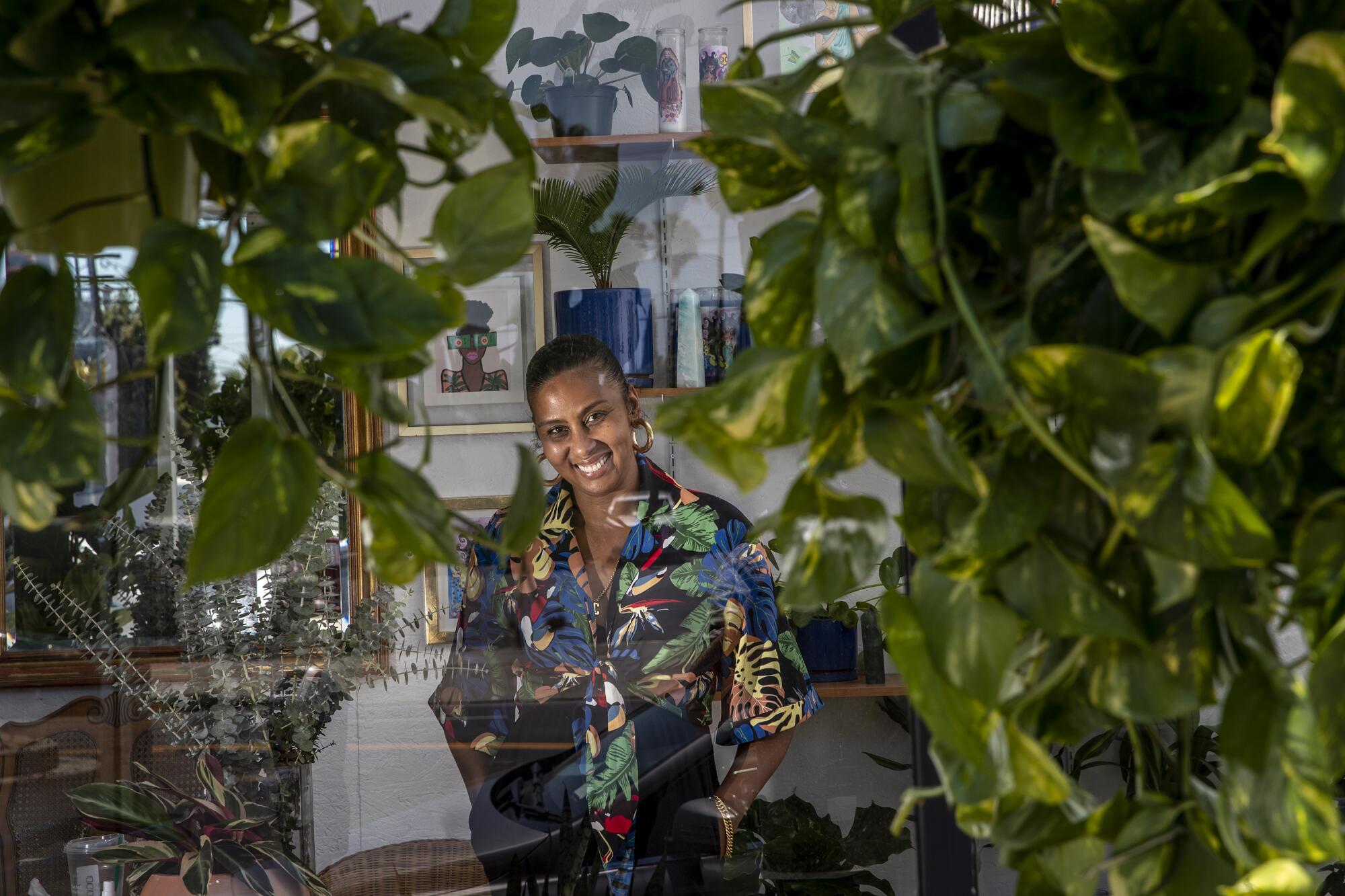
Amorette Brooms, plant shop and boutique owner
Google is your friend like nine times out of 10. If you asked a plant person or expert how to take care of a plant, chances are they’ve Googled it, and that’s how they know. All of the information for every species of plant you can imagine ... there’s tons of information online. There are YouTube tutorials — all kinds of stuff.
This might sound extreme, but Google two or three different articles about the plant because not all the information is going to be correct for you. People might say to water this plant once a week, but do they live in Florida or L.A.? Do they run their air conditioner all the time? Do they run their heater? What’s the climate like?
Learn how Brooms transformed her fashion accessory boutique, Queen, into a flower shop after COVID-19 restrictions temporarily closed shops like hers in this August 2020 Plant PPL feature.
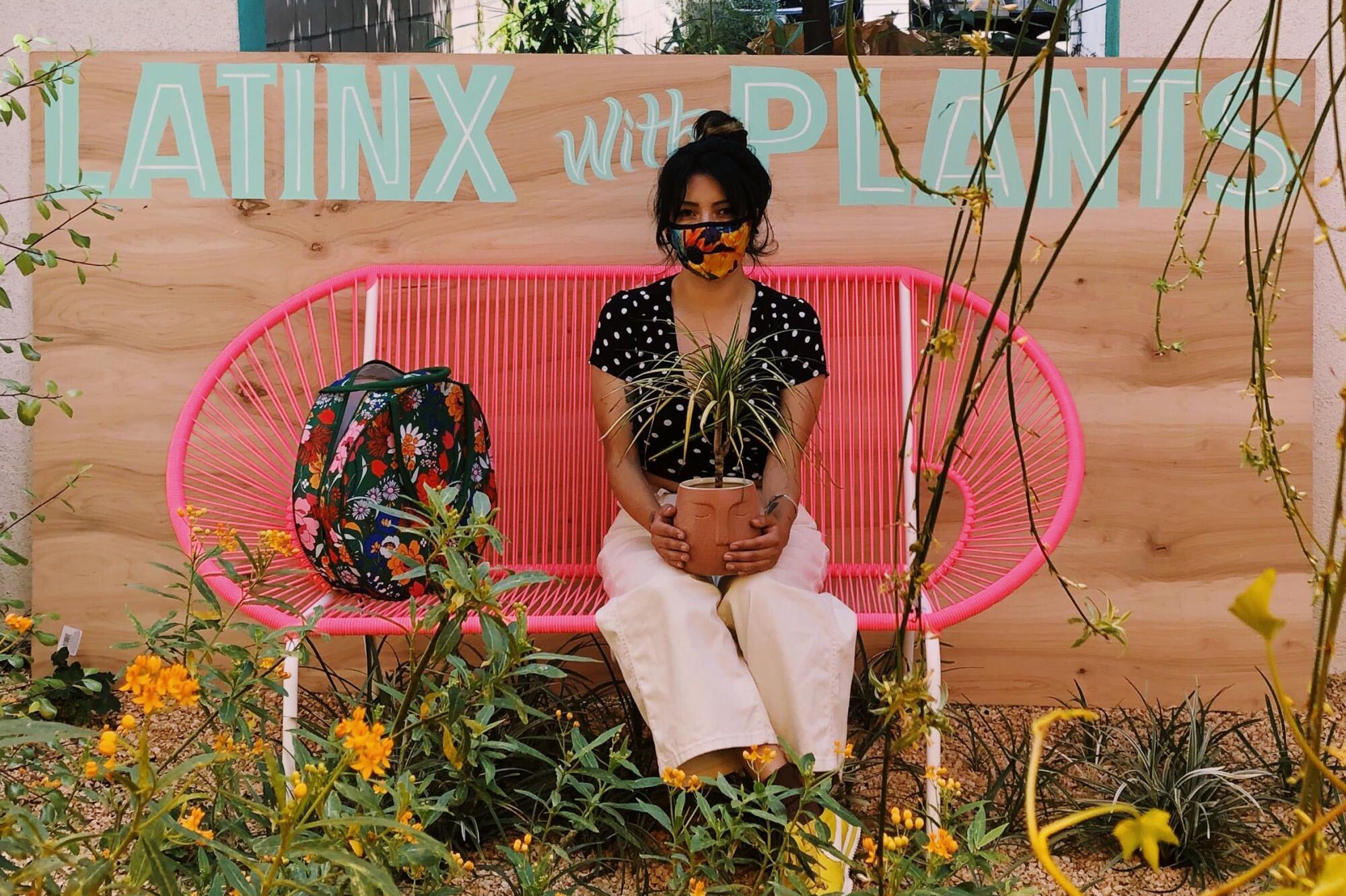
Andi Xoch, business owner and Instagram influencer @LatinxWithPlants
I feel like if you’re drawn to a plant, you’re more inclined to keep it alive. I think that if I tell folks, “Here, pick this one,” they might take it just out of being nice and courteous and not because that’s the plant they want. So I let them pick the plant that they want, and based on that, I will let them know how to take care of it. I’ll be realistic with expectations and how often they’re going to have to give this plant attention. Some folks want to give a lot of attention, so I’ll give them a plant that needs a lot of watering, and some folks just want one without the hassle.
Learn more about Xoch and her pop-up plant shop, Latinx With Plants, in our first Plant PPL feature from June 2020.
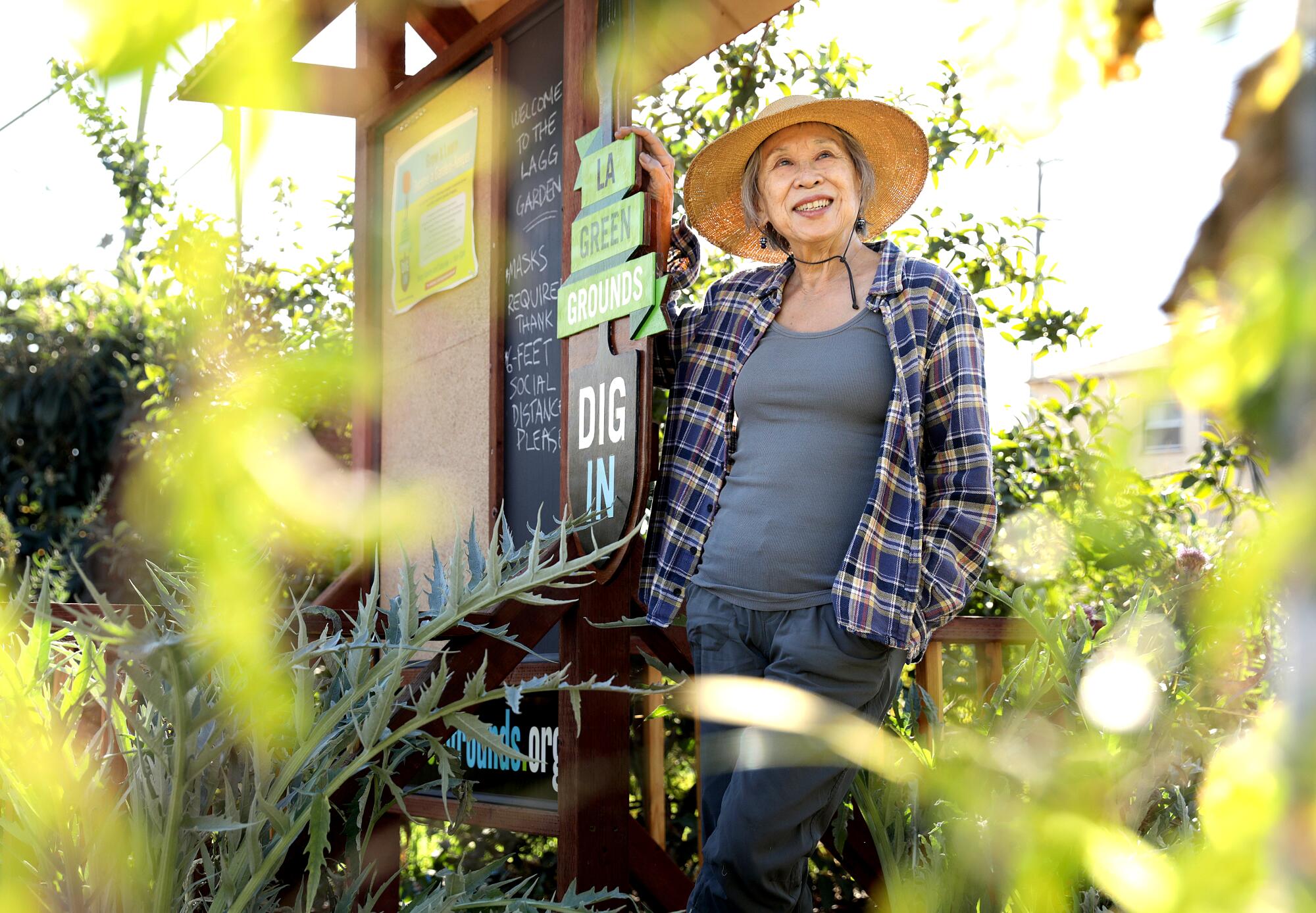
Florence Nishida, Founder of LA Green Grounds, master gardener, urban farming advocate, and teacher
I think exchange programs are always good for building community. Whether you’re exchanging food or you’re exchanging seeds, that builds ties between people because it’s sharing. We save seeds in the ‘L.A. Green Grounds’ a teaching garden that is also a 100% volunteer non-profit organization. I’m particularly interested in saving seeds of plants that are not the usual, mainstream-diet plants. I want to share seeds from other cultures. The whole point of our garden is to let people see how to grow. Let people taste. Let people see the value of plants from other cultures.
Read more about Nishida in this December 2020 Plant PPL feature.
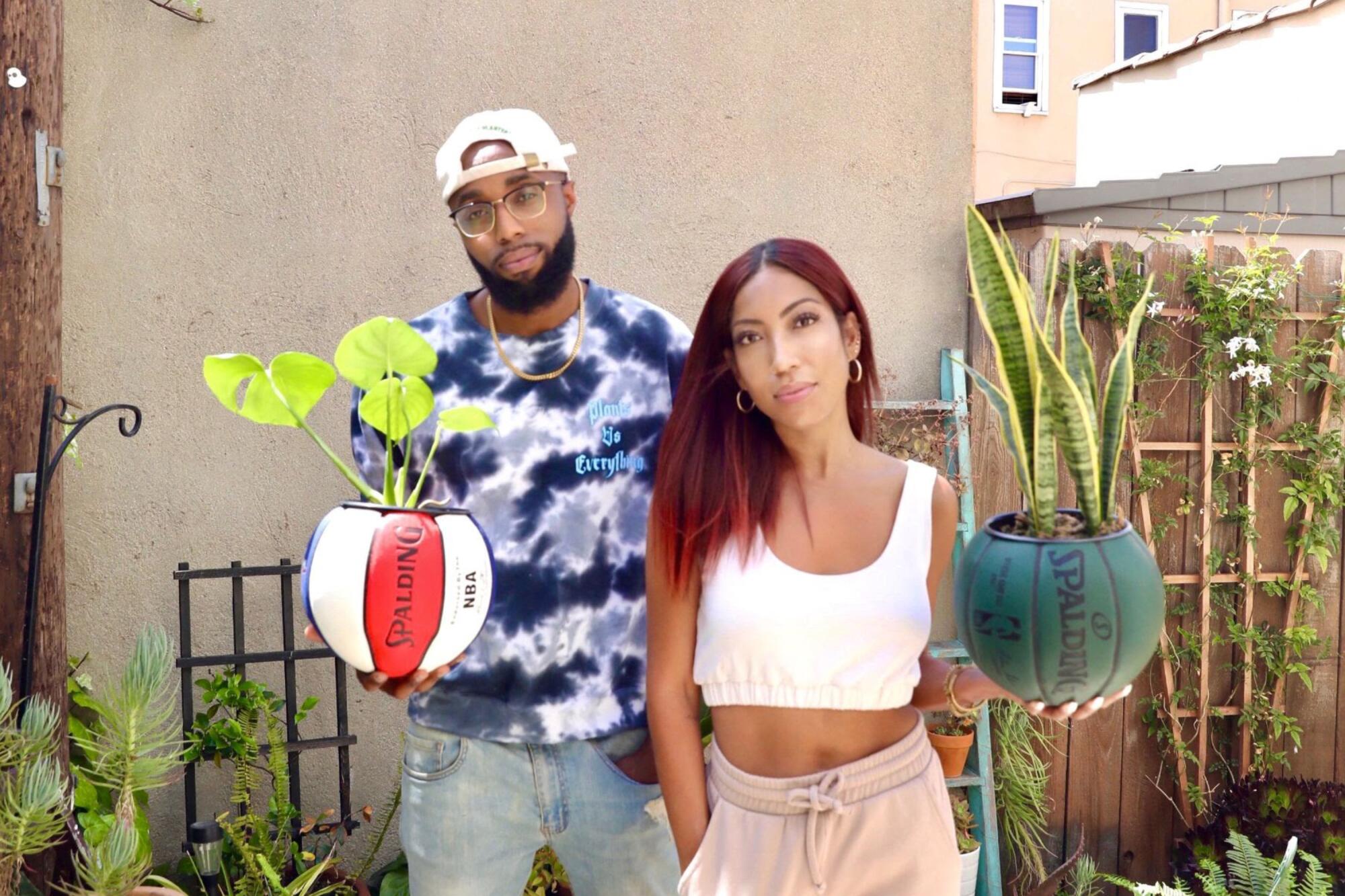
Karissa Allen and Justin Cox, co-founders of Ol’ Dirty Planters
We humanize our plants. We really do think of them as people, and we treat them that way! Your plant will tell you exactly what it needs if you pay attention. Lots of people look for prescriptive advice when caring for plants or want a structured watering schedule, but we’ve found that ditching the schedules and really listening to your plants, checking their soil regularly and paying attention to the subtle changes in your plant, really do make all the difference.
It’s also very important to choose a plant that is ideal for your environment. We talk to customers who get down on themselves because they keep buying a certain plant and it continues to die. In many cases, the plant isn’t dying because of lack of care and attention, it’s just not in its ideal environment.
It can be tough to move on from plant deaths, especially plants that you’re really excited about, but our advice is if you’ve tried taking care of a certain plant multiple times and aren’t having success even after thorough research, move on and try a different plant. There’s no shame in that!
Learn more about Allen and Cox’s trendy basketball planter business, Ol’ Dirty Planters, in this June 2021 Plant PPL feature.
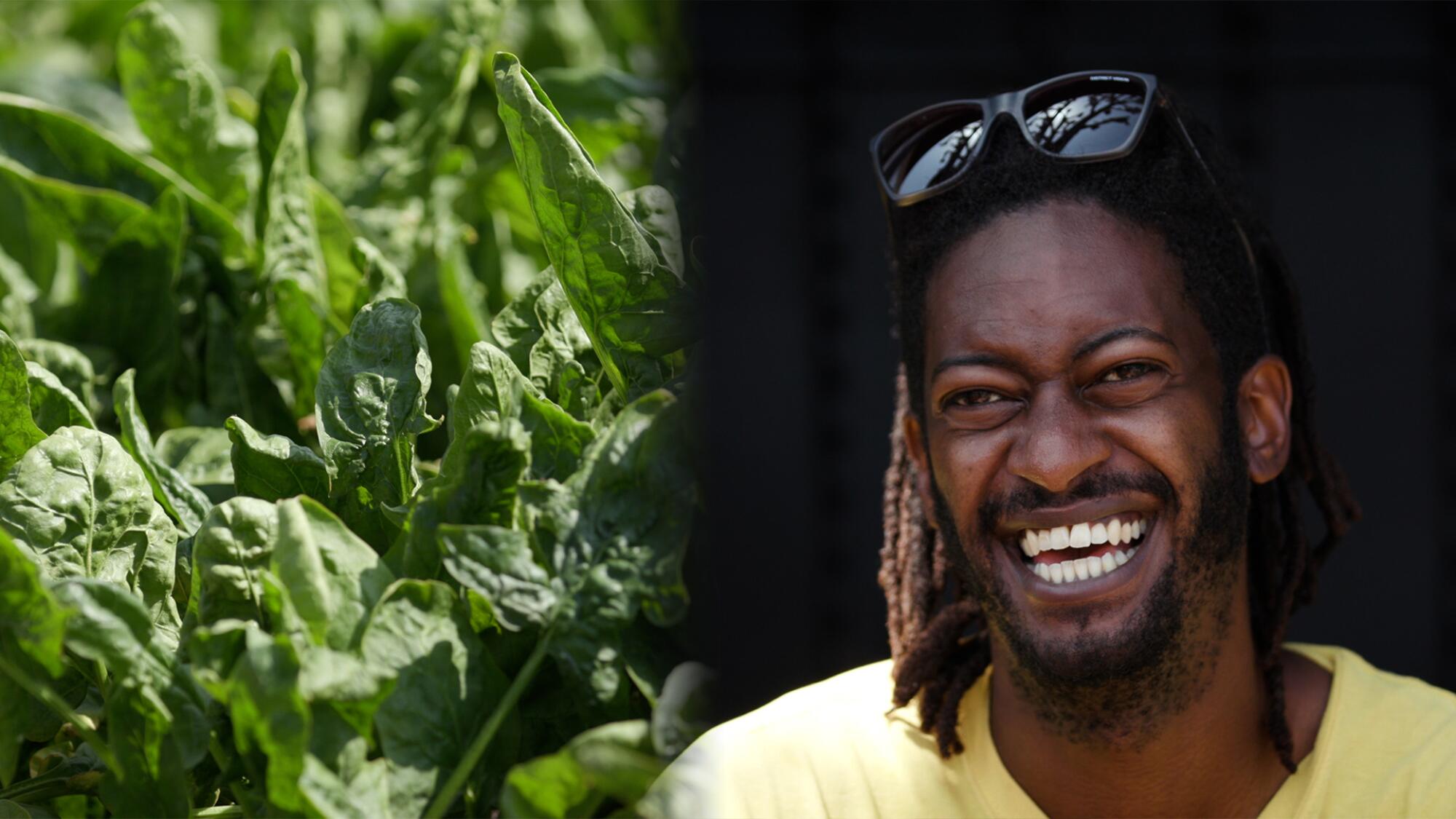
Jamiah Hargins, founder of Crop Swap L.A. and the urban gardener behind the Asante Microfarm
Begin by having a land-use agreement with a property owner where you want to grow and make sure you actually have time to achieve the goals you have in mind. Also, line up your customers ahead of time and have them prepay for the service or membership that you’re putting in place. That gives you kind of a “revenue runway,” and you don’t have to hunt for customers. You got them in mind, waiting. They all understand that the harvest volume is what it is; they get what they get. There’s no guarantee. There could be a catastrophe environmentally or with your irrigation system or some kind of seed shortage, as we experienced during the pandemic.
Read (and watch!) more about Hargins and his Asante Microfarm in this May 2021 Plant PPL feature.
Read all 29 of our Plant PPL stories here.
More to Read
Sign up for The Wild
We’ll help you find the best places to hike, bike and run, as well as the perfect silent spots for meditation and yoga.
You may occasionally receive promotional content from the Los Angeles Times.
